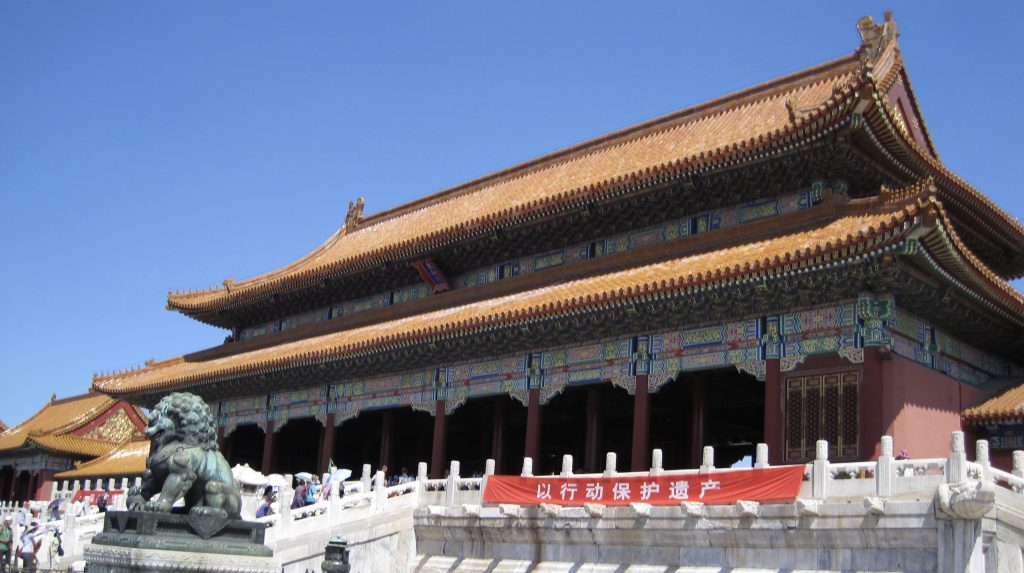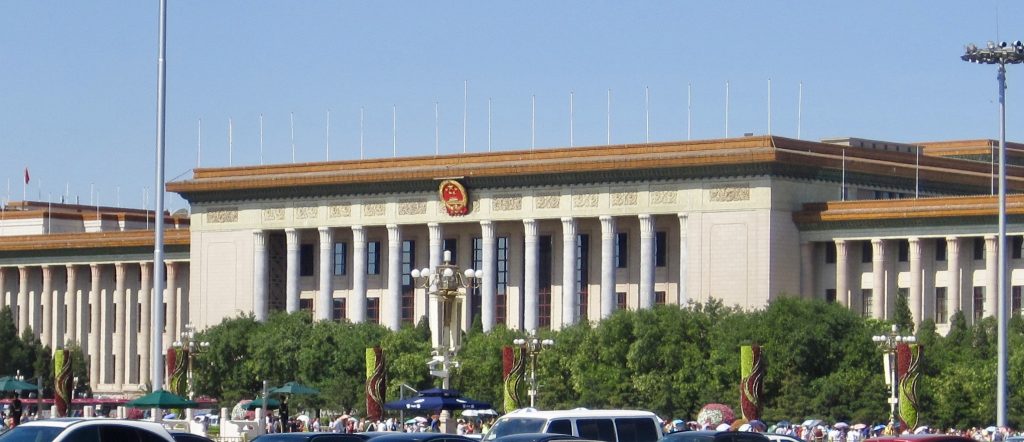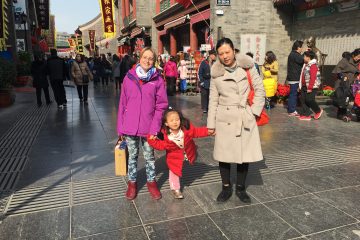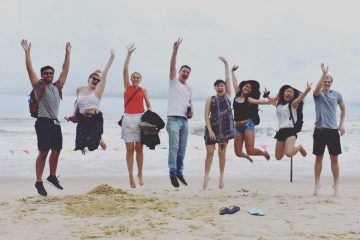Introduction
Tiananmen Square, named after the Gate of Heavenly Peace, which stands between it and the Forbidden City, is one of the largest city squares in the world. It is most well-known for the Tiananmen Square Student Massacre of 1989 – although it has also been the site of many other significant events and is frequently used today for military parades. For tourists, it is usually a quick stop en-route to the Forbidden City, which stands on its northern side.
Don’t miss
Gate of Heavenly Peace
Located at the north of Tiananmen Square, this gates is the entrance to the Forbidden City and an icon of Beijing – mostly due to its impressive architecture and large portrait of Mao Zedong. The words on either side of the portrait read: “long live the people’s republic of China” and “long live unified people of the world”.
Built in 1417 during the Ming Dynasty (but burnt down several times and most recently rebuilt in 1970), it was used not just as a gate but also as a stage where new emperors and empresses would be presented to the common people. Commoners were forbidden from crossing the threshold of this gate until the end of the last dynasty in 1911. Only the emperor could pass through the central archway, whereas important aristocrats were permitted to enter via the smaller side entrances.
To reach the gate you must first pass over the Golden Water Bridge. This network of seven marble bridges is protected from evil spirits by guardian lions and dragon carvings.
Monument to the People’s Heroes
Unveiled in 1958 and positioned right in the centre of Tiananmen Square, this monument commemorates events in modern Chinese history – in particular the Chinese Liberation War, New Democratic Revolution, and the establishment of the People’s Republic of China. There is also mention of “heroes from the many struggles since 1840”, referring to events such as the Opium Wars, uprisings and the war against Japan.
Marble carvings of these events can be seen around the base of the monument. The north face of the monument is inscribed with a quote from Mao Zedong: “eternal glory to the people’s heroes”, while the south face contains a longer epitaph declaring eternal glory for those who lost their lives in the aforementioned wars and struggles.
Mausoleum of Mao Zedong
Dominating the eastern side of Tiananmen Square, this memorial hall celebrates the life and achievements of Mao Zedong – a key founder and member of the Communist Party until his death in 1976.
Four groups of clay statues representing the Chinese Revolution feature by the northern and southern gates, while 30 flags (one for each region of China) fly above the southern gate.
Inside the mausoleum you can view the statue and body of Mao himself, wearing uniform and covered with the Communist Party flag inside a crystal column. On the first floor, similar memorial rooms exist for other revolutionary leaders – including Zhou Enlei, Liu Shaoqi, Zhu De, Deng Xiaoping and Chen Yun. You can also view a film about their achievements in the movie room.
Note: there are strict requirements on entering the mausoleum, including a ban on cameras, phones, food and drink, revealing clothing, etc. There are often huge queues to get in, so perhaps only worth it for those particularly fascinated in modern Chinese history.
Flag Raising Ceremony
Every day at sunrise, huge crowds gather to watch the daily raising of the Communist Party flag at Tiananmen Square. Sometimes this is accompanied by a full military band, making for an impressive spectacle. Get there early for the best view, particularly if you are visiting during peak season.
Practical Info
Tickets: free (queue for security).
Opening hours: 8:30 – 17:00.
Recommended visit: 1/2 hour.
Transport: take metro line 1 to Tiananmen Square East (天安门西, exit B) or West (天安门东, exit A), or metro line 2 to Qianmen (前门, exit A/B).
Nearby

Forbidden City 故宫
Forbidden City 故宫

Great Hall of the People 人民大会堂
Great Hall of the People 人民大会堂
National Museum of China 中国国家博物馆



0 Comments